Hermès Skins and Materials: A Complete Guide for Luxury Resellers
Hermès is a luxury brand known for its exceptional quality products, including handbags made of various types of exclusive leathers. Each leather and material has its own unique characteristics, making it important for professional luxury resellers to have a comprehensive understanding of the different types of materials used by Hermès.
In this article, we will explore the most popular Hermès skins, ranging from the sought-after calf, goat, and buffalo skins, to the most exotic Hermès leathers, like crocodile, lizard, alligator, and ostrich. We also offer you an insight into Hermès famous fabrics.
If you are a professional luxury reseller, this guide will be a valuable resource to help you identify and differentiate the Hermès leathers and provide expert advice to your clients.
- Calfskin
- Epsom Leather
- Togo Leather
- Box Calf Leather
- Barenia Leather
- Barenia Faubourg Leather
- Swift Leather
- Clemence Leather
- Evercolor Leather
- Novillo Leather
- Maurice Leather
- Fjord Leather
- Negonda Leather
- Veau Madame Leather
- Graine Monsieur Leather
- Vache Trekking Leather
- Country Leather
- Grain d'H Leather
- Sikkim Leather
- Veau Jonathan Leather
- Butler Leather
- Vache Leather
- Tadelakt Leather
- Sombrero Leather
- Chamonix Leather
- Derma Leather
- Evercalf Leather
- Troika Leather
- Velvet Leather
- Grizzly Leather
- Vache Liegee Leather
- Ardennes Leather
- Gulliver Leather
- Graine Courchevel Leather
- Vaux Graine Lisse leather
- Goatskin
- Buffalo
- Crocodile
- Alligator Mississippiensis
- Lizard
- Ostrich
- Fabrics
Calfskin
Calfskin is one of the most popular and widely used leathers in Hermès products. It is known for its softness, durability, and natural grain pattern. Hermès uses various types of calfskin in its products, each with its own unique characteristics and qualities. Next, we will show the Hermès calfskin options and some of their characteristic features.
Epsom Leather
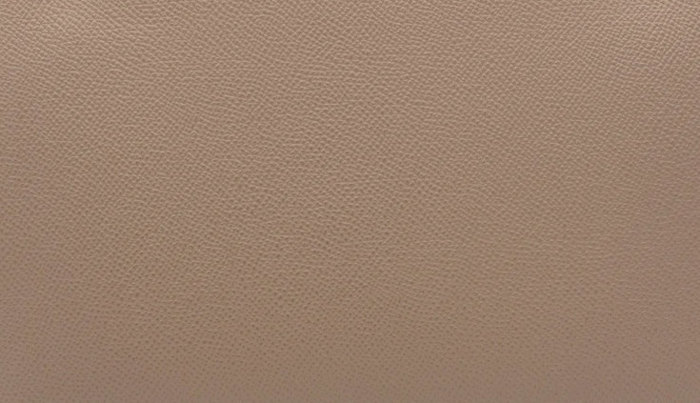
Epsom leather is one of the most durable materials ever produced by Hermès. Its exceptional strength and structure make it a highly coveted option, as it tends to display vibrant colors much more brilliantly than other leathers. Introduced in 2004 as a replacement for the now-discontinued Courchevel leather, Epsom leather boasts a unique character with a rigid feel, a semi-matte finish, and a cross-hatch grain that's been meticulously pressed to ensure long-lasting durability.
Epsom leather is often the preferred choice for handbags, wallets, and small leather goods due to its extreme toughness and stiffness. When attempting to identify an Epsom leather item, there are three key characteristics to look for: a firm feel, a semi-matte finish, and a finely-pressed cross-hatch pattern.
Togo Leather
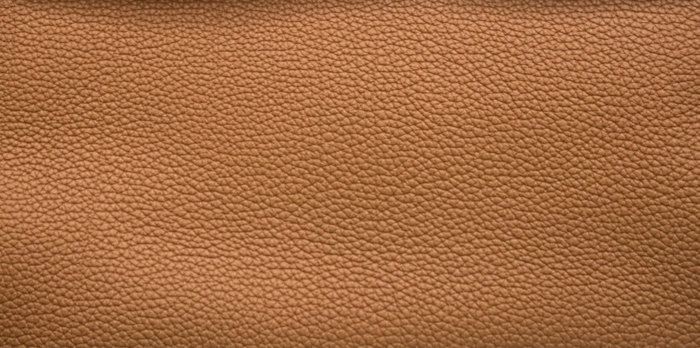
Since its introduction in 1997, Togo leather has become one of the most widely recognized materials used by Hermès, valued for its supple texture, natural pebbled grain, and remarkable durability. This highly sought-after leather is named after the Togolese Republic in Africa and has been used to create some of the most iconic Hermès handbags and small leather goods over the years.
To identify Togo leather, look for these three key qualities: a soft and supple texture, a matte finish, and an irregular pebbled grain that may show natural veins and wrinkles, which are desirable for the unique look they create. Over time, the leather may develop a slight sheen in areas where it has been worn.
Box Calf Leather
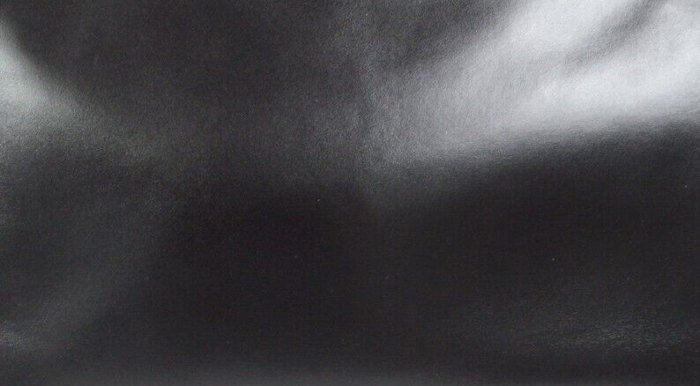
Box calf leather is a smooth, shiny calfskin that has been polished to a high gloss. Box Calf leather is one of the oldest and most recognizable Hermès leathers still in production. Named after Joseph Box, the English shoe craftsman who made high-quality luxury footwear for London's petit bourgeoisie, this leather was created in the 1890s.
The traits of Box Calf leather include a stiff texture, a subtle shine, and a surface with a delicate "crackling" effect. Over time, with age and wear, Box Calf leather develops a rich patina. While it can easily be scratched, it is very simple to repair and get rid of the marks with a polishing tool used by a trained craftsman.
To identify Box Calf leather, look for its slight sheen, rigid hand, and subtle "crackling" effect throughout the surface of the handbag.
Barenia Leather
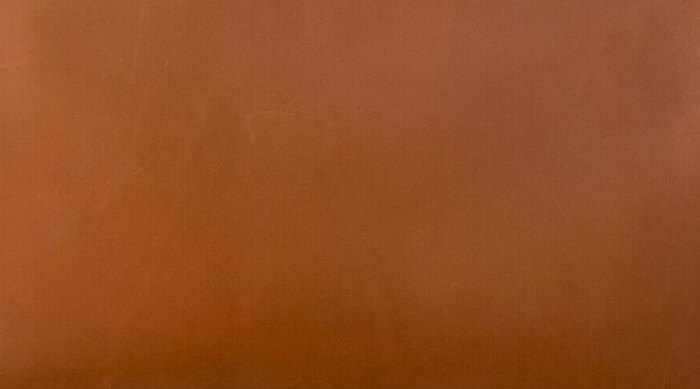
Hermès Barenia leather is a classic and luxurious material known for its rich texture and natural patina that develops over time. It was first introduced by Hermès in the 1970s and is derived from high-quality calf leather. In 2017, the atelier introduced another variation of this leather, naming it Barenia Faubourg after the famous Paris boutique Rue de Faubourg Saint-Honoré. The Barenia Faubourg has a small grain that makes it more resistant than the original Barenia leather.
Barenia leather is characterized by its smooth appearance, as well as its supple, buttery, and silky feel, sadly, this characteristic makes it vulnerable to scratching. However, over time, the leather will develop a warm and beautiful patina that is unique to each piece.
When identifying Barenia leather, look for its smooth appearance, its silky feel, and the way it develops a natural patina over time.
Barenia Faubourg Leather
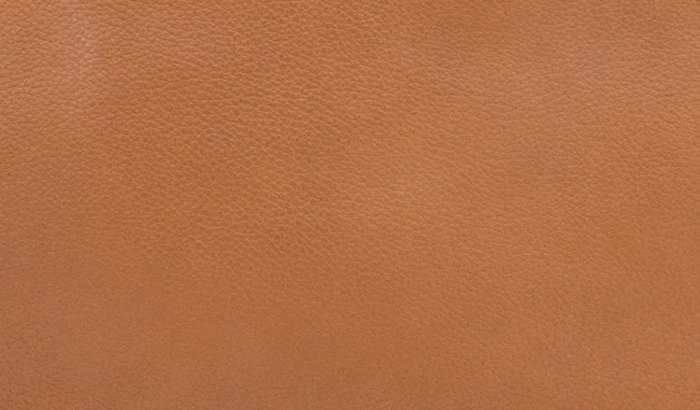
The Hermès Barenia Faubourg leather is a variation of the original Barenia leather, it was introduced in 2017 as an alternative providing texture and more resistance to the Barenia leather since the original one introduced in the 1970s became easily scratched and it was too vulnerable to water.
The Barenia Faubourg was crafted to retain some of the characteristics of the classic Barenia, such as its glossy finish, but adding the resistance of the Togo leather, which features a heavily grainy surface. The Barenia Faubourg was produced and named after the iconic Paris boutique Rue de Faubourg Saint-Honoré.
To identify Barenia Faubourg leather, look for a soft glossy look with a grainy appearance.
Swift Leather
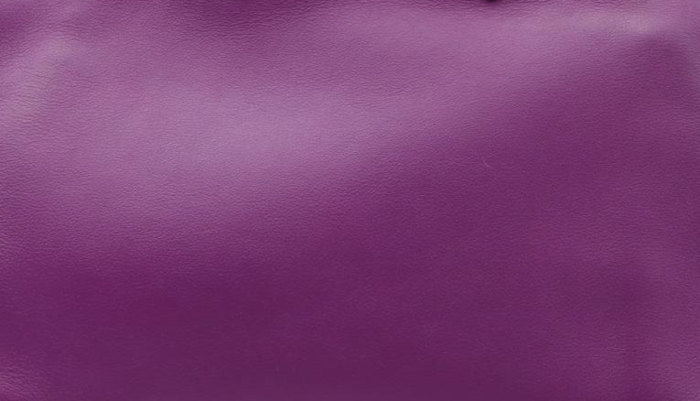
Hermès enthusiasts have a soft spot for Swift leather not only for its beauty but also due to its unique backstory. This leather was named after the famous author of "Gulliver's Travels," Jonathan Swift, and is often used for clutches, small leather goods, and Birkin and Kelly handbags. After being introduced to the Hermès collections in 2006, Swift replaced the discontinued Gulliver leather.
The soft and smooth texture, semi-matte finish, and natural, smooth grain are distinctive characteristics of Swift leather. Due to its pillowy softness, this leather material can exhibit signs of wear more readily than others. As the leather ages, it typically softens and develops a slight sheen.
To recognize Swift leather, keep an eye out for these three qualities: a supple and smooth texture, a semi-matte finish, and a natural, smooth grain.
Clemence Leather
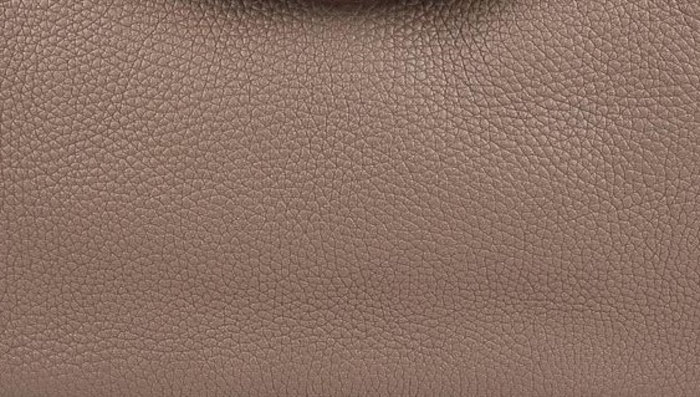
Clemence is a Hermès leather type that is often mistaken for Togo due to their striking similarities. Introduced in 1992, Clemence has become a popular material for Hermès handbags due to its supple feel, semi-matte appearance, and irregular pebbled grain.
The key difference between Clemence and Togo is that Clemence has a wider, flatter grain and lacks veining. As it ages, Clemence will become more supple and develop a slight sheen with wear.
To identify Clemence leather, be on the lookout for its supple texture, semi-matte look, and wide, uneven grain that is devoid of veins.
Evercolor Leather
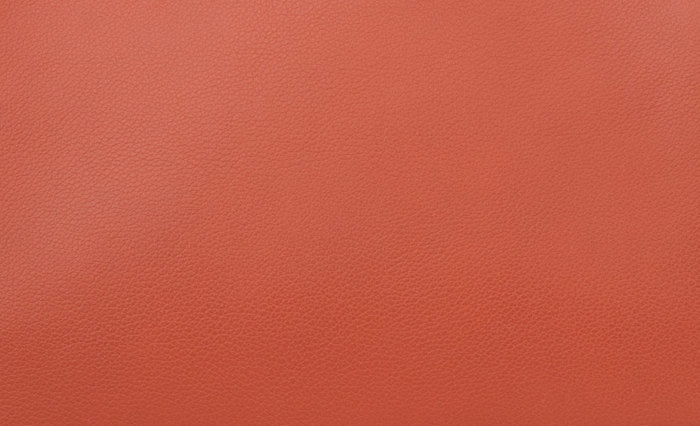
Evercolor leather is a relatively new addition to the Hermès leather family, introduced in 2012. It is a variation of the older Evercalf and Evergrain leathers, but what sets it apart is its vibrant and diverse range of colors. Unlike its cousins, which are typically made in neutral tones, Evercolor offers a rich palette of hues to choose from.
The leather itself has a supple and soft texture, with a satin-like finish that gives it a luxurious appearance. The grain is tight and regular, created by pressure printing. This process adds durability to the leather, similar to Epsom, but Evercolor maintains a softer, more natural look. Some people compare Evercolor to Togo leather due to their similar appearance, but Evercolor's grain is pressed rather than natural.
To identify Evercolor, look for these three qualities: a supple and soft feel, a satin-like finish, and a tight and regular grain pattern.
Novillo Leather
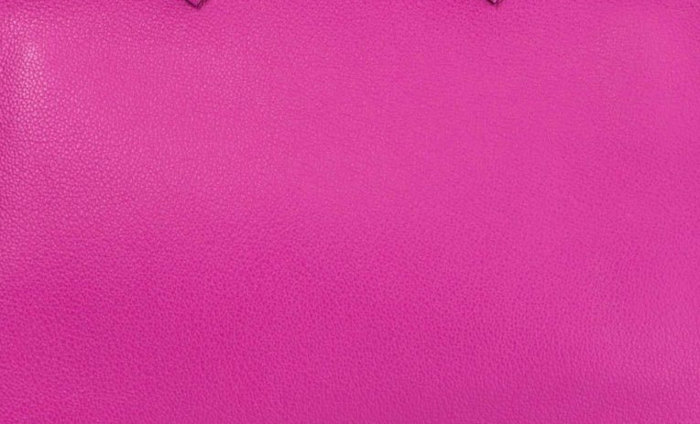
In 2015, Hermès introduced Novillo leather, which is a smooth leather with small grains that has great color absorption. This leather has been compared to Evercolor and its grains are smaller than Clemence or Togo leather. Despite its similarity to Epsom leather in terms of durability, Novillo leather is more scratch-resistant since its grains are not stamped.
Birkin handbags are usually manufactured in Novillo leather, making them a popular choice due to their lightweight durability, smooth feel, excellent color absorption, and scratch resistance. Novillo leather appears to have the best qualities of popular leathers like Togo, Clemence, Epsom, and Evercolor.
To identify the Novillo leather, look for a smooth feel and a glossy finish with a small grain texture.
Maurice Leather
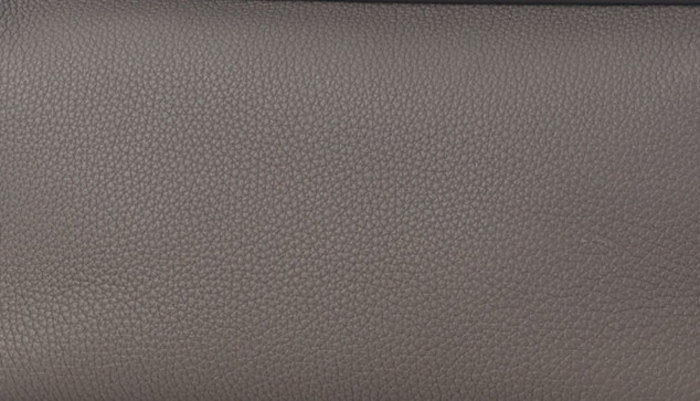
Hermès Maurice leather was introduced in 2017, it is produced with bull hide and this leather has a similar appearance to the Clemence leather, however, the Maurice features a smaller grain with defined patterns, and it also tends to hold its shape much better than the Clemence leather, and that is why it is considered to be more resistant with time.
The Maurice leather is characterized by its resistance and hard structure, but as time goes by it tends to soften a little more and it creates a beautiful patina. This leather is not usually applied to Birkin or Kelly handbags but to Evelyne, Picotin, and 24/24 handbags.
To identify the Maurice leather, you need to look for a small and well defined grain with a resistant structure.
Fjord Leather
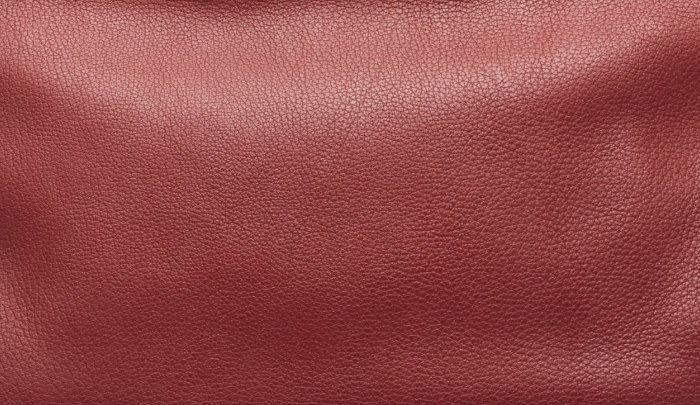
Hermès Fjord leather is a natural-grained leather that was introduced by the brand in the 2000s. It is a type of leather that is made from the hides of baby calves, which are then heavily drummed to create a raised grain effect. The result is a leather that is incredibly soft and supple, yet has a distinctive texture that is both durable and water-resistant.
Fjord leather is known for its natural, pebbled texture, which gives it a unique appearance and makes it easy to distinguish from other leathers. It is often used in Hermès bags, particularly the Birkin and Kelly, due to its durability and ability to hold its shape over time.
When identifying Fjord leather, look for its natural-grained texture and water-resistant quality.
Negonda Leather
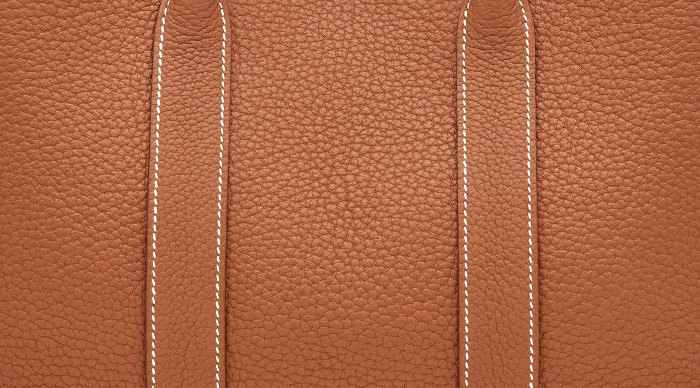
Negonda leather is a calf leather that is used in a variety of Hermès bags and accessories. It is known for its unique texture, which is created by stamping the leather with a hot iron, resulting in a slightly raised grain pattern.
Negonda leather is durable, lightweight, and has a slightly matte finish. It was introduced by Hermès in the late 1990s and is believed to have been named after a small town in Italy.
When identifying Negonda leather, look for the slightly raised grain pattern and matte finish.
Veau Madame Leather
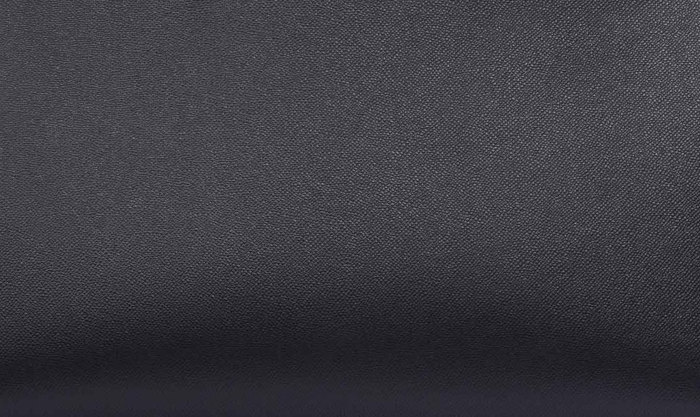
Veau Madame is a smooth leather that was introduced by Hermès in the 1950s. This leather is made from calf hide, which is why it is also referred to as "Madame Calfskin."
Veau Madame has a smooth and refined appearance, with a slight sheen that gives it a luxurious feel. The leather is durable and resists scratches, making it a popular choice for handbags and small leather goods.
To identify Veau Madame, look for its smooth and refined appearance, as well as its slight sheen. The leather also has a soft and supple feel, with a fine grain pattern.
Graine Monsieur Leather
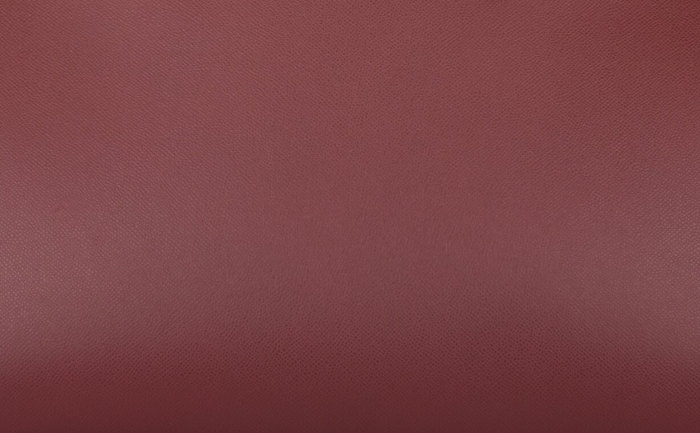
In 2018, Hermès unveiled its latest leather addition, Veau Monsieur, also known as Monsieur. It boasts a sleek grain that closely resembles the classic Box Calf leather. With time and use, the leather develops a subtle luster and smoothness, giving it a sophisticated touch.
One of the unique features of Monsieur is its "on-board" texture, which ensures that it holds its shape remarkably well. This durable yet elegant leather is often applied to Hermès handbags such as Kelly, Birkin, and Constance.
To identify the Graine Monsieur, look for smooth grains and a semi-lustrous appearance, it is also a sturdy leather.
Vache Trekking Leather
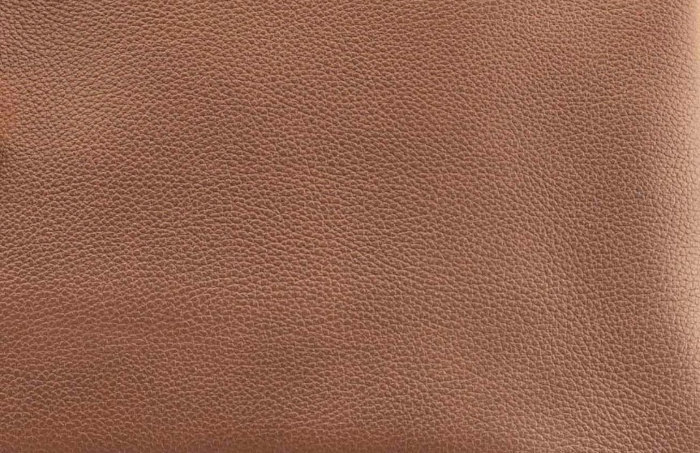
Hermès introduced a unique leather called Vache Trekking Leather in 2009, which is made from rare processed male cowhide. This leather is known for its fine press and has a distinctive grain, which is only available in a limited range of colors.
Because of its rarity, Vache Trekking Leather is only used on a select range of Hermès bags. It is a highly sought-after material by luxury enthusiasts due to its exclusivity and unique characteristics. If you come across a Hermès bag made of Vache Trekking Leather, you know you have a true rarity on your hands.
To identify the Vache Trekking leather, look for very small pressed grains, with time it develops a lustrous patina.
Country Leather
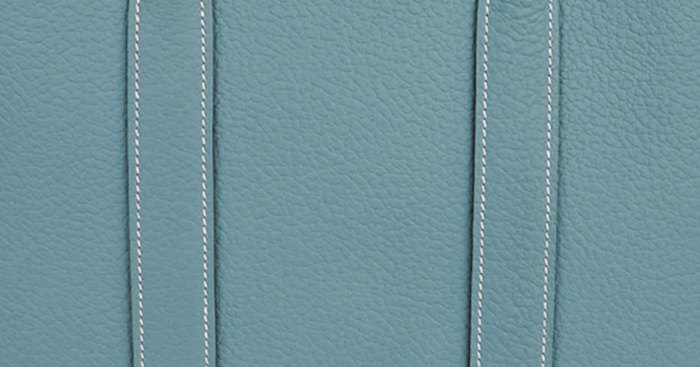
Introduced in 2012, Country leather is a processed female calf leather that has gained popularity due to its firmness and durability. Mainly used for the Garden Party lineup, this leather is renowned for its unique pattern created by its large grain size.
It is an ideal choice for those who seek a balance of style and functionality, as it provides protection against everyday wear and tear. Despite being a relatively new addition to the Hermès leather collection, it has quickly become a favorite among luxury bag enthusiasts.
To identify the Hermès Country leather, look for a large grain with a firm consistency that provides resistance.
Grain d’H Leather
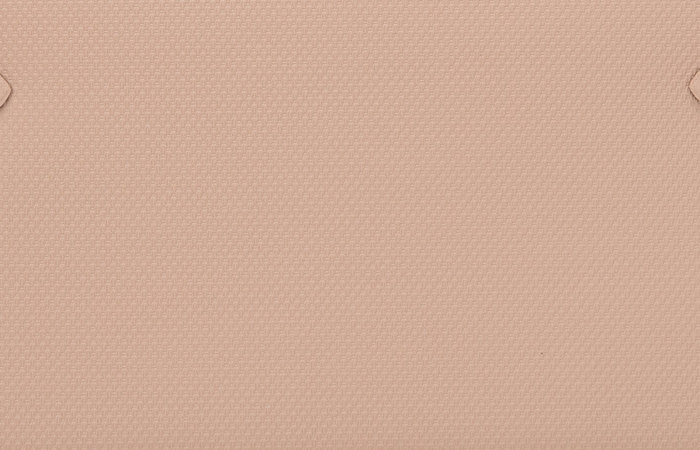
Grain d'H is a Hermès leather that was introduced in 2012. The "d'H" stands for "à la hauteur," which means "to the height" in French, referring to the leather's uniform grain pattern.
The leather is known for its smooth and sleek appearance, with a fine and tight grain that is very resistant to scratches and wear. Grain d'H leather is typically used for small leather goods, such as wallets and cardholders, and can be identified by its uniform and refined grain pattern.
Sikkim Leather
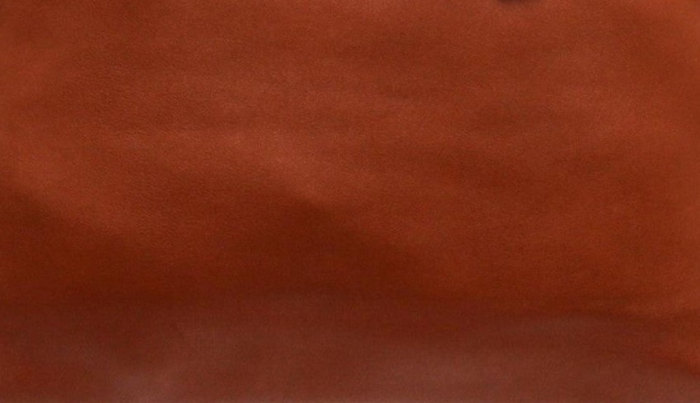
Hermès Sikkim leather is a type of delicate leather with a smooth surface and almost no visible grain, giving it a soft and velvety texture. Introduced by Hermès in the late 1990s, Sikkim leather is a lightweight material known for its supple and pliable feel.
However, due to their delicate nature, Sikkim leather handbags can easily become scratched or marked if not taken care of properly. Sikkim leather bags typically provide a slouchy appearance because of the soft characteristic of this leather.
To identify the Sikkim leather, look for almost nonexistent grain with a soft and velvety texture.
Veau Jonathan Leather
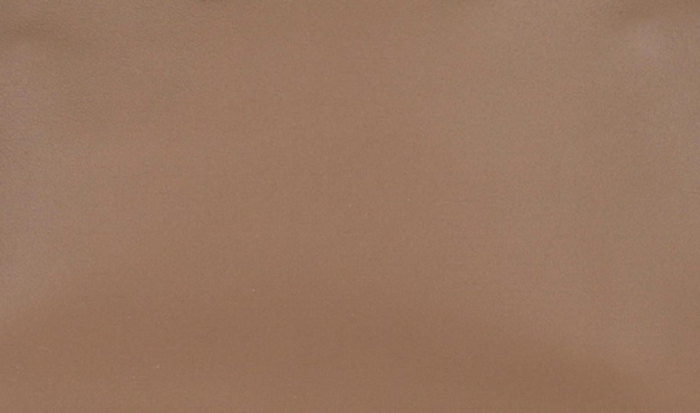
Introduced in 2018, Veau Jonathan is a soft and lightweight leather that shares similarities with Swift leather. The leather has a natural, subtle grain pattern and a matte appearance. Veau Jonathan leather is commonly used for small leather goods and some handbags.
It is named after Jonathan Swift, the author of "Gulliver's Travels," which also inspired the name of another Hermès leather, Swift leather.
To identify Veau Jonathan leather, look for a supple and smooth hand, a matte appearance, and a natural grain pattern.
Butler Leather
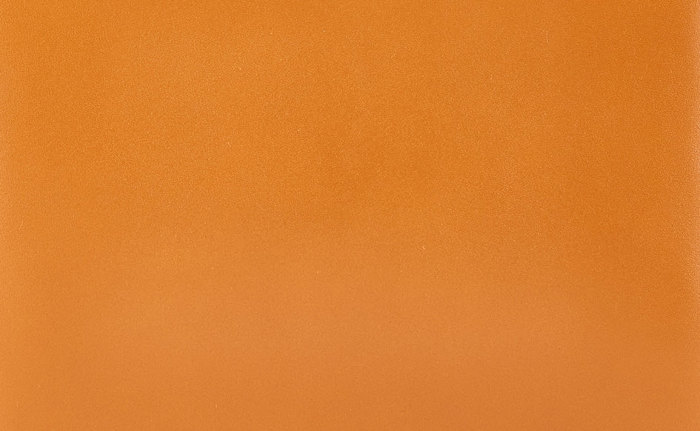
Butler leather, released by Hermès in 2013, is another type of natural and untreated leather. Although it is similar to Barenia and Tadelakt leather, it is rare and difficult to find. Butler leather develops a patina over time, but it needs to be treated with the utmost care since it is prone to scratches. Although most of the scratches can be buffed out, proper care is essential to maintain its beauty.
To identify Hermès Butler leather, you need to look for a subtle grain and a silky smooth texture with a little shine.
Vache Leather

Hermès' Vache leather is one of the brand's oldest leathers, often found in vintage handbags. This natural leather has been left untreated, allowing a beautiful patina to develop with use over time.
Vache leather has a delicate, soft texture but also features a strong hardness that adds to its durability. Only available in two colors, natural and black, Vache leather has a completely smooth finish and is one of the softest leathers to the touch. Despite its delicacy, Vache leather is highly coveted for its unique texture and the way it develops over time.
To identify Vache leather, look for a rich and smooth finish without grains and a really soft touch.
Tadelakt Leather
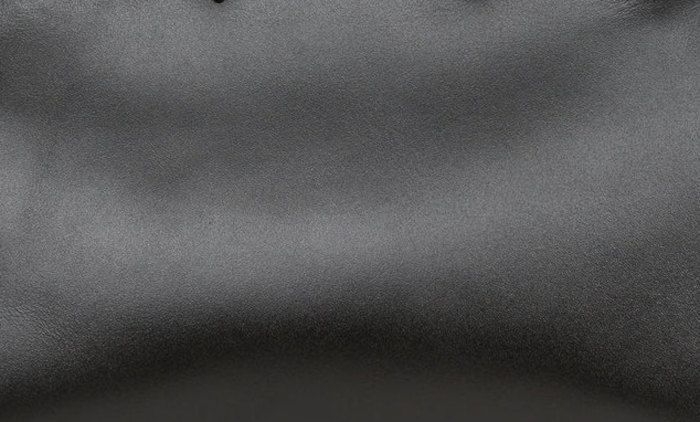
Hermès Tadelakt leather is a smooth and glossy leather that is often compared to the popular Hermès Box Calf leather, and it is no surprise why they are so easily confused. They share many similarities, including their tendency to scratch easily and blister when exposed to water. However, Tadelakt leather is much more lustrous than Box Calf because it has no visible grains.
This creates a silky texture, glossy finish, and high color absorption, making it a favorite for dressier handbags. While it is often compared to other Hermès leathers like Box Calf and Swift, it is unique in its smooth texture and glossy finish.
To identify the Tadelakt leather, look for its distinctive smooth, glossy finish and the absence of visible grains or patterns.
Sombrero Leather
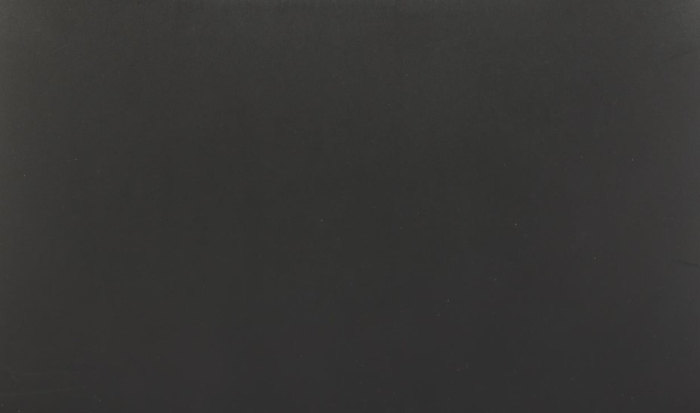
Hermès Sombrero leather is a delicate calf leather with a matte finish and a soft texture. The leather was first introduced in 2011 and has since become a popular choice for Hermès rigid handbags such as the Kelly Sellier or the Constance.
Despite its durability, Sombrero leather should be handled with care, as it is susceptible to scratching. However, the leather's smoothness and matte finish give it a unique appearance that sets it apart from other Hermès leathers.
To identify Sombrero leather, look for a smooth texture and a matte finish, you can also recognize it for its sturdiness.
Chamonix Leather
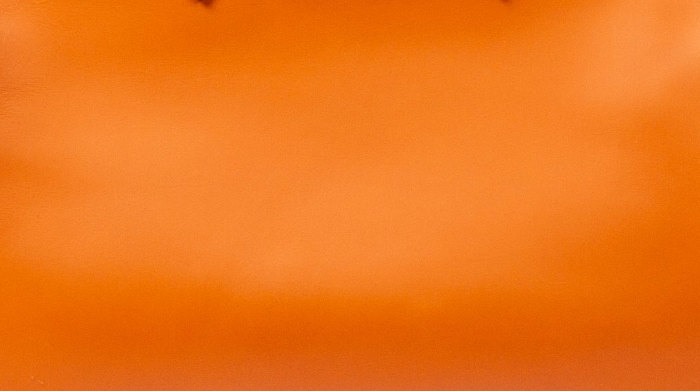
Hermès Chamonix leather, named after the French resort town in the French Alps, is sourced from male calves and is considered the matte version of the Box Calf leather. This leather has a smooth, almost plastic-like texture to the touch and a non-glossy appearance.
Although it is sturdy and scratch-resistant, it is not water-resistant and can be easily marked by water. Scratches on this leather can blend into the material to provide a vintage appearance and can be buffed out with ease. It is commonly used for handbags such as the Birkin and Constance.
To identify the Chamonix leather, look for a matte and smooth appearance with a plastic-like texture to the touch.
Derma Leather
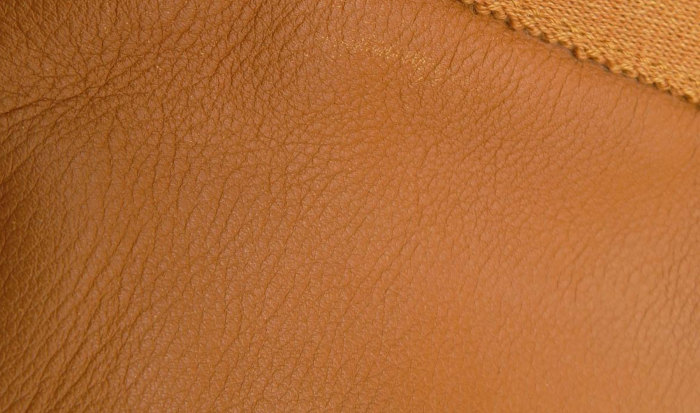
Hermès Derma leather, introduced in 2004, is made from the hides of male calves that have been processed to achieve an incredibly smooth texture. This results in a soft, matte finish that is delicate to the touch.
Despite its delicacy, Derma leather is highly malleable and can be shaped into almost any form once it has undergone the processing stage. This quality makes it a popular choice for Hermès handbags, which require a certain level of flexibility to retain their shape. However, it is important to note that due to its delicate nature, Derma leather requires special care and attention to maintain its softness and matte finish.
To identify the Derma leather, you need to look for a smooth texture with a matte finish and delicate touch.
Evercalf Leather
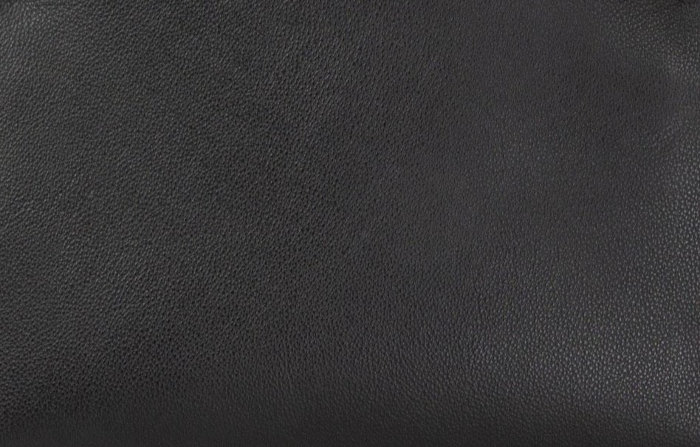
Hermès Evercalf leather is often confused with Box Calf leather due to its similar appearance. However, there are notable differences that set Evercalf apart. This leather is exceptionally smooth and soft to the touch, with a more matte surface that has a subtle sheen.
Unlike Box Calf, Evercalf is less susceptible to scuffs and scratches, making it a more durable option for everyday use. While both types of leather are popular choices for Hermès bags, Evercalf is often preferred for its added resilience and refined texture.
To identify Evercalf leather, look for a smooth touch and a matte surface with a subtle sheen.
Troika Leather
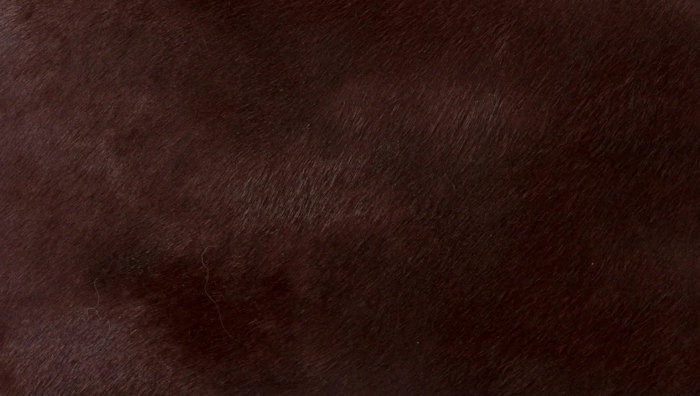
Hermès Troika leather is a unique leather with a very distinct texture that is hard to find. It is covered in smooth, lustrous calf hair, giving it a special look and feel. This leather is typically used in combination with other Hermès leather types.
It is made from the skin of a male calf that has yet to be processed and dyed, also known as unborn calf leather. The leather is known for its smooth texture and beautiful coat that is full of luster. Due to its rarity, Hermès Troika leather is only used on very few bags worldwide, making it a highly sought-after material for collectors.
To identify the Troika leather, look for lustrous calf hair with smooth texture and shine.
Velvet Leather
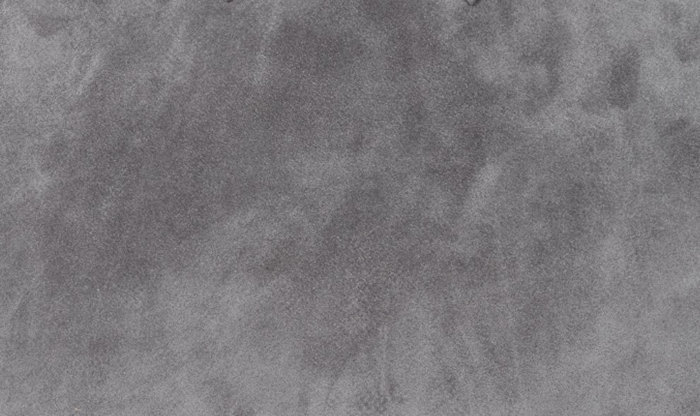
Hermès Velvet leather, also known as Nubuck, is crafted from the rawhide of a male calf. The suede leather is then trimmed to achieve a soft, velvet-like finish while maintaining the coat on the surface.
This type of leather is primarily used in smaller accessories such as wallets, key holders, and belts, though it can also be found in selected handbags. Due to its delicate nature, Hermès Velvet leather requires careful handling and maintenance.
To identify Velvet leather, look for a suede texture and look with a matte finish.
Grizzly Leather
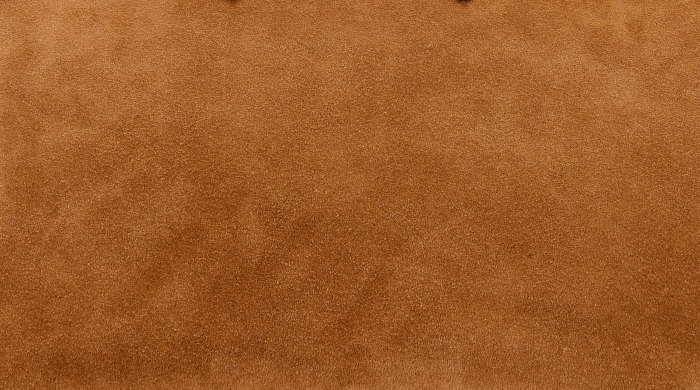
The Hermès Grizzly or Veau Doblis Suede is a leather commonly used in the crafting of the recent Grizzly Birkin model, that is characterized by a velvety texture, and although the leather is very similar to the Velvet leather, it shows subtle differences, for example, the Grizzly leather features a bushier appearance in comparison with the Velvet.
The Veau Doblis Suede is also used in the making of Hermès footwear and other small leather accessories. This leather can be identified by its velvet and soft texture and its bushy appearance. The Grizzly is usually available in natural tones such as gold and gris Caillou, although occasionally it can be found in more colorful shades, like bleu Thalassa.
Vache Liegee Leather
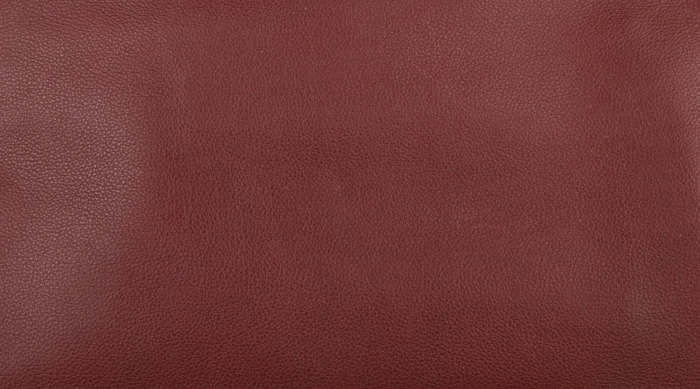
Hermès Vache Liegee leather is a popular choice among Hermès collectors due to its durability and the fact that it holds its shape incredibly well. This leather was introduced to replace Ardennes leather in 2004 and has quickly become a favorite among Hermès enthusiasts.
The thickness of Vache Liegee leather gives it a very sturdy and robust feel, making it the perfect material for bags that are intended to last for decades. Despite its thickness, Vache Liegee is also very pliable and soft to the touch, making it a pleasure to handle. Vache Liegee leather is available in a range of colors, and its natural patina develops over time, adding to the beauty and character of the bag.
To identify Vache Liegee leather, you must look for small soft grains to the touch and a sturdy overall feeling.
Ardennes Leather
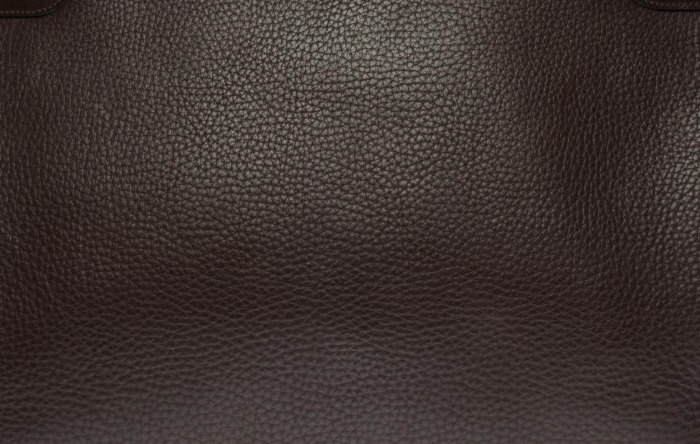
Ardennes leather, also known as Vachette Grainee des Ardennes, was a highly sought-after leather used in Hermès bags until it was discontinued in 2003. The leather was known for its durability and water-resistant qualities, making it perfect for frequent use. Even though Ardennes leather is no longer produced by Hermès, the brand introduced a similar alternative in 2004, called Vache Liegee leather.
The thick, processed grain gave the leather a unique texture and made it incredibly sturdy, ensuring the bag held its shape well. However, over time the colored dyes could fade, so proper care was necessary to maintain the leather's appearance.
To identify Ardennes leather, you must look for a unique processed grain texture and a sturdy material with water-resistant qualities.
Gulliver Leather
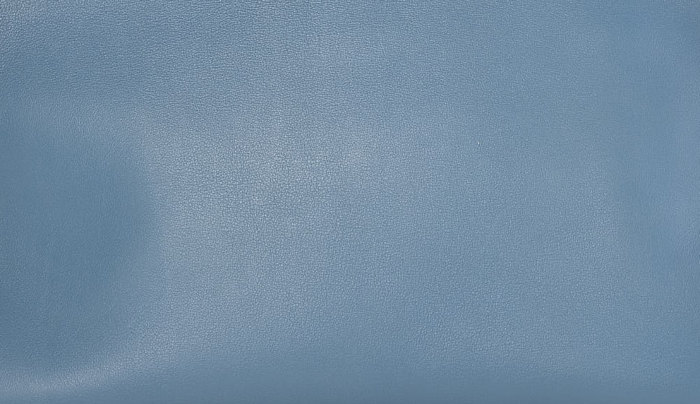
Gulliver leather was used by Hermès to produce handbags until it was discontinued in 1999. However, it was reintroduced in 2005 with the name Swift and is still highly used today.
This leather has a fine grain that is incredibly soft to the touch and has the ability to reflect light while absorbing dye like few other leathers on the market. Although it is prone to scratches, small scratches can be easily removed by a gentle swipe of your fingers.
While Gulliver leather is no longer produced by Hermès, pre-owned Hermès Gulliver handbags can still be found in the secondary market for collectors and enthusiasts alike.
To identify Gulliver leather, you must look for a fine-grain texture with a soft touch and a good ability to display colors.
Graine Courchevel Leather
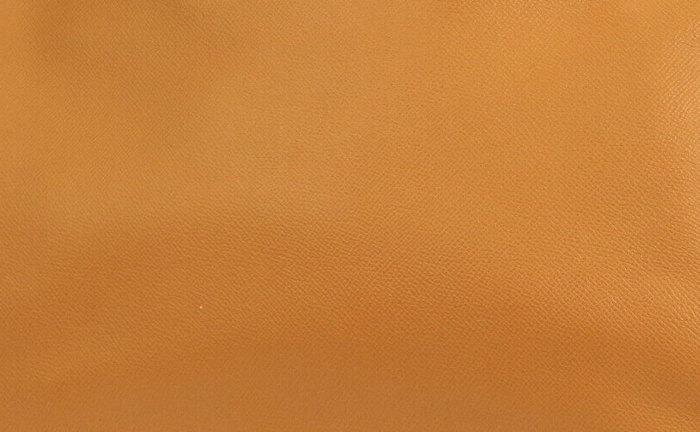
Hermès Graine Courchevel leather was a popular material used for bags until its discontinuation in 2004 when it was then replaced by the more popular Epsom leather. The lightweight and embossed texture of Courchevel leather made it a popular choice for many, as it was easy to clean, water-resistant, and less prone to scratches and other abrasions.
What differentiated Courchevel leather from other Hermès leathers was its unique pigment on the top grain, which appeared much darker toward the center and gave it a lustrous shine. Though it is no longer produced, handbags and accessories made from Courchevel leather can still be found in the secondary market, prized for their unique texture and appearance.
To identify Courchevel leather, you must look for small subtle grains with an embossed texture and a strong and resistant structure.
Veau Graine Lisse Leather
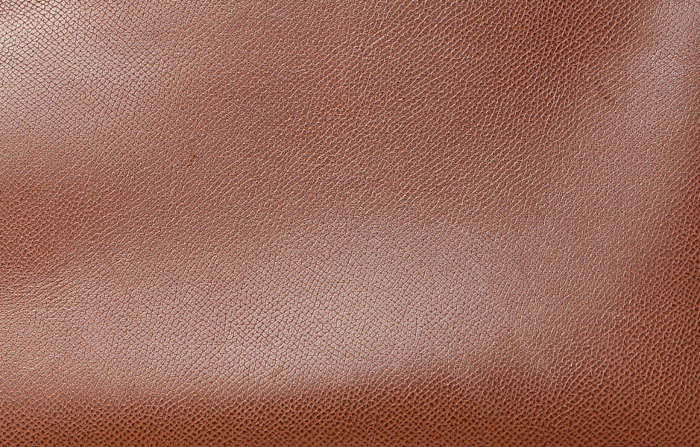
Veau Grain Lisse, or VGL for short, is a glossy and thin leather that is obtained after being pressed and processed. It has excellent resistance to scratches and water, making it ideal for daily use.
However, Veau Grain Lisse shares many qualities with the more popular Hermès Epsom leather, which led to its discontinuation in 2003. Despite that, it is still possible to find pre-owned Hermès Veau Grain Lisse handbags and accessories in the secondary market.
To identify the Veau Graine Lisse leather, look for small pressed grains with a resistant structure and a glossy finish.
Goatskin
Hermès goatskin is a soft and supple leather that is highly valued by fashion enthusiasts and is loved for its durability, flexibility, and luxurious appearance. It is one of the most versatile materials in the Hermès leather collection and is used to create a range of products, from handbags to wallets and even clothing.
Hermès uses several types of goatskin, each with its own unique texture and characteristics. Next, we will examine the different types of Hermès goatskin.
Chèvre Mysore
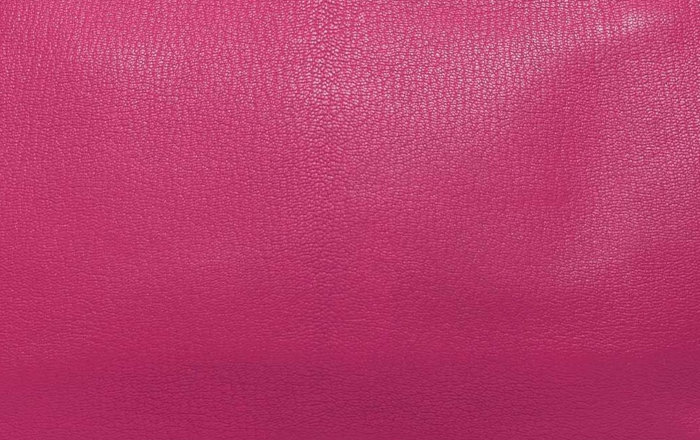
For decades, Chèvre Mysore has been a classic leather material used by Hermès. Unlike other leathers, this material is sourced from goatskin in the Karnataka region of India, near the city of Mysore. Although it was introduced in the 1990s, it is uncertain which specific year it was launched.
Chèvre Mysore is famous for its supple yet dry touch, a satin finish, and tight caviar-like grain. The leather has a distinctive "wet" appearance and is incredibly durable, making it a popular choice among Hermès enthusiasts. Furthermore, this material is renowned for its ability to display a wide range of vibrant colors.
If you want to identify Chèvre Mysore, look for these three characteristics: a supple and dry touch, a satin appearance, and a tight caviar-like grain.
Chèvre Coromandel Leather
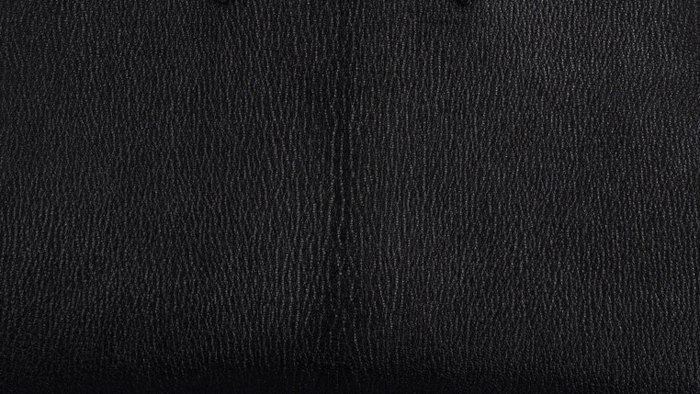
Chèvre Coromandel is a highly sought-after Hermès leather due to its unique qualities. This leather is sourced from male mountain goats, giving it a toughness and resilience that sets it apart from other Hermès leathers. Its slight graining and iridescence add to its distinctive look. The textured surface makes it almost impervious to scratches and other blemishes, while still remaining soft to the touch.
As one of the more expensive options in the Hermès leather collection, Chèvre Coromandel is considered to be one of the best. It is a lightweight and strong leather, making it perfect for daily use, and the smooth finish gives it an air of luxury.
To identify the Chèvre Coromandel leather, you must look for a slight grain with an iridescent distinct look, it has shine and a grained touch.
Vibrato Leather
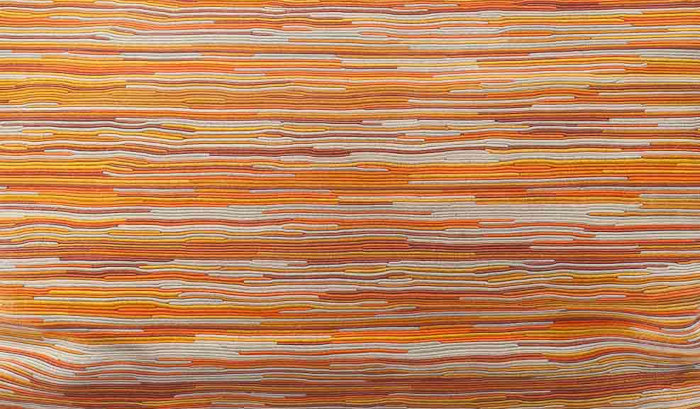
Hermès Vibrato leather is a truly unique leather that gives the appearance of a woven fabric or canvas but is, in fact, crafted from strips of goatskin leather and suede. This unique production process results in leather that is eye-catching and stands out in the crowd.
The intricate weaving of the leather strips makes it one of the most durable options for everyday use, as it is resistant to scratches and scuffs. However, due to its rarity and unique production method, Vibrato leather is one of the more expensive options in the Hermès lineup.
Identifying the Vibrato leather is quite simple since it has a very distinctive appearance with strips of leather ranging from different colors.
Buffalo
Hermès uses buffalo leather to create a few of their exclusive handbags. This leather is incredibly durable and long-lasting, making it an excellent choice for those who want a handbag that will withstand the test of time.
The grainy texture of the surface is smooth to the touch and easy to clean with a few swipes. This leather is known for developing unique coloring as it ages, which adds to its beauty over time. Hermès’ Garden Party line is a perfect example of how Buffalo leather can be used, as its durability makes it ideal for everyday use.
It is important to note that there are different types of buffalo leather used by Hermès, each with its unique characteristics and features. Each type of buffalo leather is processed in a unique way, resulting in different textures and finishes. Next, we will show you the Hermès buffalo leathers.
Buffalo Sindhu Leather
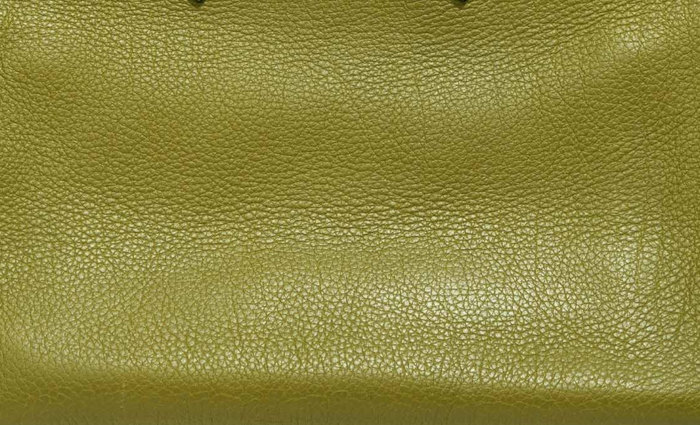
The Hermès Buffalo Sindhu leather, introduced in 2007, is a heavyweight leather that is perfect for everyday use due to its durability. It was exclusively used in the Green Party line and is made from the hide of a water buffalo.
The unique grain size and coloring of the leather make it a distinct and unique hide to work with. The leather’s resistance against scratches and blemishes makes it an ideal choice for those who use their Hermès bags often. Its resilience to damage and ability to maintain its shape makes it a dependable choice for many.
Buffalo Gala Leather
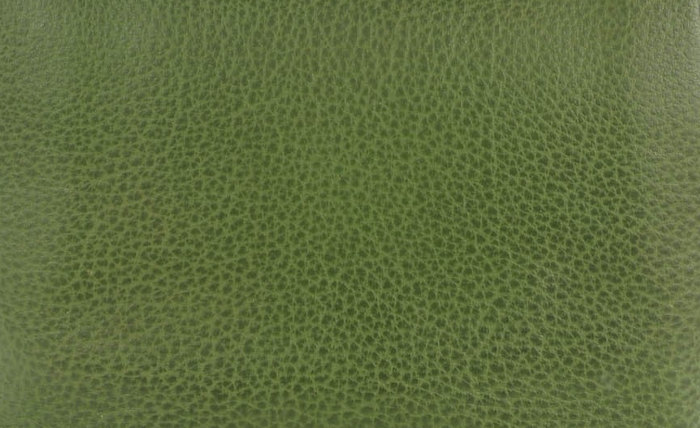
Hermès Buffalo Gala leather is a soft, supple material that is exclusive to the smallest leather goods in the Hermès collection. Its unique grain is characterized by a sophisticated pattern that appears to glisten under direct light.
Buffalo Gala leather is one of the more delicate leathers in the Hermès collection and requires special care to keep it in top condition. However, its soft texture and visually stunning grain make it an ideal choice for smaller Hermès accessories like wallets and coin purses.
The grain on this leather is more refined than the Buffalo Sindhu and the leather is lighter in weight. With its unique appearance, Buffalo Gala is a sought-after leather for those who appreciate luxury and craftsmanship.
Buffalo Pondicherry Leather
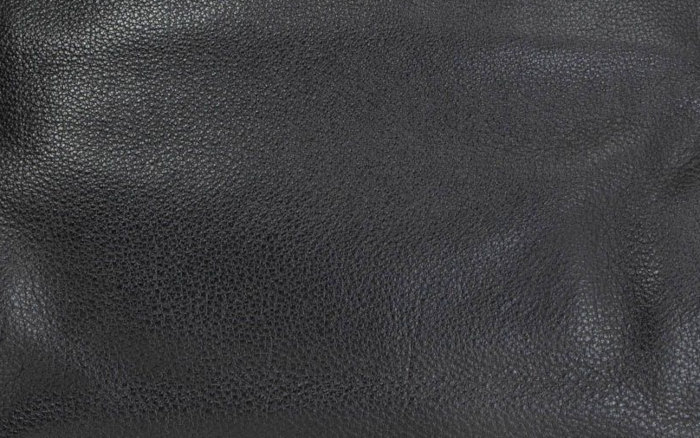
Hermès Buffalo Pondicherry leather is a thick and sturdy buffalo leather that was first introduced in 2011. It is named after the city of Pondicherry in India, where the leather is tanned using natural dyes and waxes.
This leather has a slightly grainy texture and is known for its resistance to scratches and water. It is often used in Hermès bags that are designed for heavy use and is distinguishable by its unique texture and rugged appearance.
Buffalo Dalmatien Leather
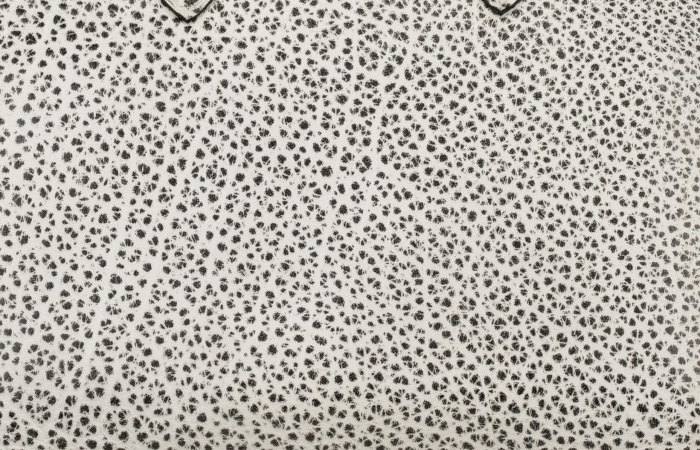
Buffalo Dalmatien, also known as Buffalo Skipper, is a rare and unique Hermès leather that has been discontinued. The leather features a one-of-a-kind spotted appearance, similar to the pattern of a Dalmatian dog. This is because the leather has been dyed twice, with pigments gathering towards the center of the grain during the dyeing process.
Despite its distinctive appearance, Buffalo Dalmatien leather is also known for its durability and flexibility. The medium-sized texture of the leather is raised, giving it a unique tactile experience. The leather is resistant to scratches and water, making it ideal for everyday use.
Although discontinued, Hermès enthusiasts can still find handbags and accessories made with Buffalo Dalmatien leather in the secondary market, in a few different colors.
Crocodile
Hermès Crocodile leather is one of the most luxurious and sought-after leathers in the world. It is used to create some of the most iconic Hermès bags, such as the Birkin and Kelly bags.
Crocodile leather is known for its unique texture, which features small, symmetrical scales that create a distinctive pattern. There are different types of crocodile leather used by Hermès, each with its own unique characteristics. Next, we will explore these crocodile leathers in more detail.
Crocodile Niloticus
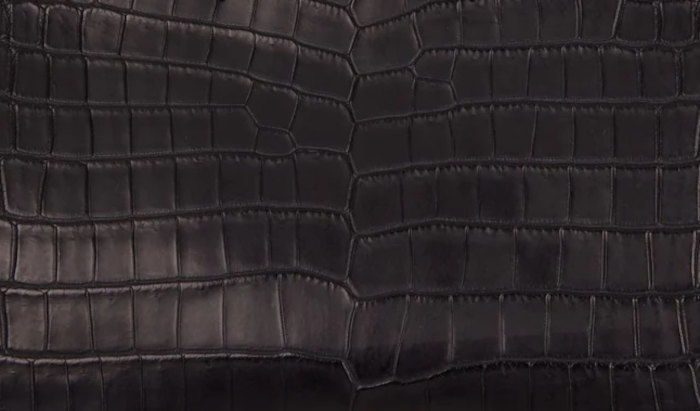
Crocodile Niloticus skin is a luxurious material used by Hermès to create some of its most iconic and sought-after handbags. Sourced from the Nile River in Zimbabwe, Africa, this leather is known for its distinctive texture, which is characterized by small and square-shaped scales. Hermès has been using crocodile leather since the 1920s, making it one of the brand's oldest and most prized materials.
Crocodile Niloticus skin is available in two variations: shiny (lisse) and matte. The shiny version is treated with a special glaze that gives it a lustrous appearance, while the matte version is left untreated for a more natural look. Regardless of the finish, crocodile leather is known for its exceptional durability and longevity, making it a popular choice among collectors.
To identify genuine Hermès Crocodile Niloticus skin, look for the distinctive small square-shaped scales, the texture, and the quality of the leather. It is important to note that the Crocodile Niloticus skin holds colors better than the Crocodile Porosus skin.
Crocodile Porosus
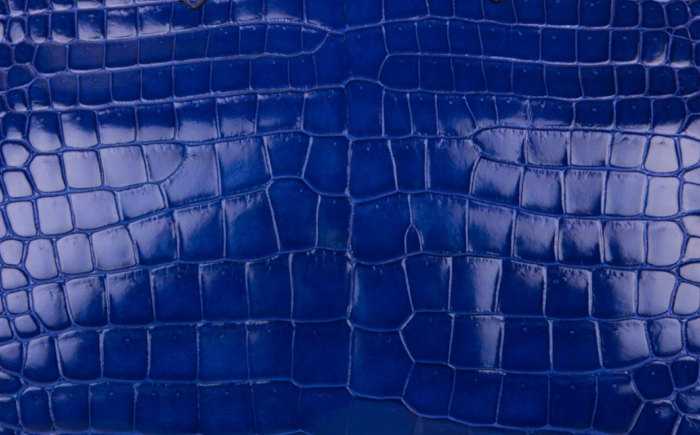
Hermès Crocodile Porosus skin is one of the most luxurious materials used by the brand. It is made from the saltwater crocodile species native to Australia and Southeast Asia. The leather is prized for its unique characteristics, including its large, symmetrical scales and distinctive pattern with a central pore in each scale. The skin is highly durable, and over time it develops a beautiful patina.
There are two variations of the Crocodile Porosus skin: shiny (lisse) and matte. The shiny version is created by polishing the scales after tanning, resulting in a glossy finish. The matte version, on the other hand, is left unpolished, giving it a more natural and subtle appearance.
To identify Hermès Crocodile Porosus skin, look for the distinctive, symmetrical scales that have a central single pore in each one. The skin has a supple feel and a slight sheen, which is more pronounced in the shiny version.
Alligator Mississippiensis
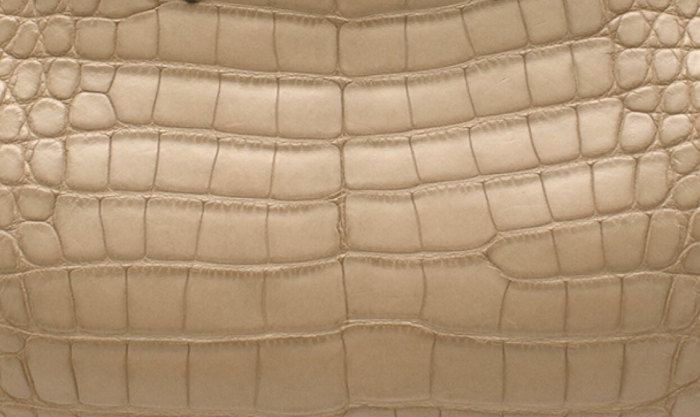
Alligator Mississippiensis is a high-quality alligator skin that is known for its luxurious texture and durability. The Mississippiensis is a species of alligator native to the United States, particularly in the southern regions. Hermès handbags made from this skin are highly coveted by luxury fashion enthusiasts for their unique texture and exotic appearance.
Compared to Crocodile skins, the Mississippiensis has a more consistent and smoother texture, which makes it an ideal choice for a clean and polished look. This type of alligator skin is also known for its large, irregular scales that have a distinctive rectangular shape. The scales are often used to create a beautiful pattern on the bag, adding to its overall elegance.
To identify Alligator Mississippiensis skin, look for its signature pattern of large, irregular rectangular scales with rougher edges.
Lizard
Hermès lizard leather is another exotic skin used to create some of the most luxurious handbags and accessories. The skin of the lizard is finely textured with scales, which adds a subtle, elegant touch to any design.
There are different types of lizard leather used by Hermès, each type of lizard leather has its unique characteristics and texture, making it an excellent option for different styles and designs. Next, we will show you the lizard skins used in Hermès.
Lizard Varanus Niloticus
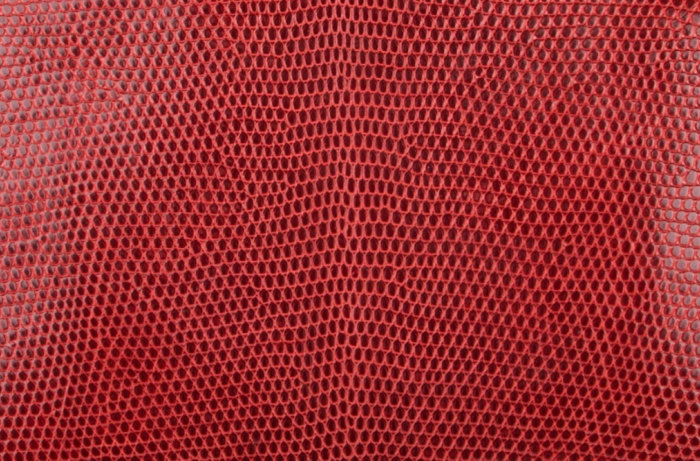
Hermès Lizard Varanus Niloticus skin is a type of exotic leather with fine scales that creates a unique pattern. This leather is made from the skin of the African Nile Monitor lizard, which is found in sub-Saharan Africa.
Lizard Varanus Niloticus skin is characterized by its small rounded consecutive scales, with a grainy delicate texture and glossy finish. It is often used for smaller items such as wallets, clutches, and small size handbags, due to its delicate nature, since it is vulnerable to water and tarnish.
When identifying Lizard Varanus Niloticus, look for small consecutive rounded scales, with a natural glossy finish that sets it apart from other Hermès leathers.
Lizard Varanus Salvator
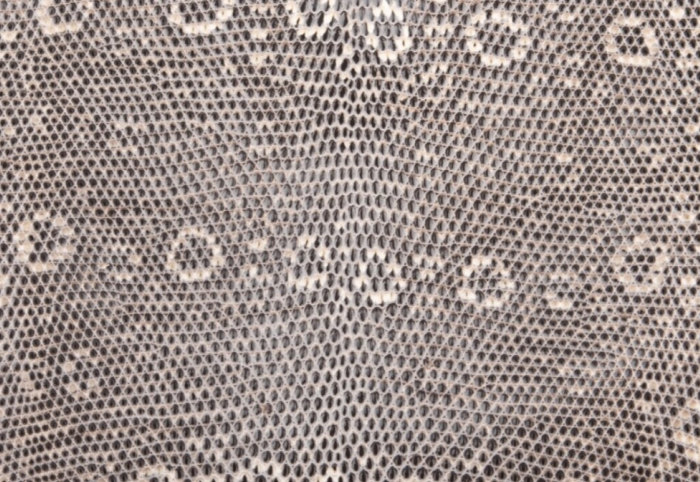
Hermès Lizard Varanus Salvator is a type of exotic leather used by the luxury fashion house. This leather comes from the Salvator lizard, a species native to Southeast Asia. This exotic skin is known for its distinctive small consecutive scales that feature natural brown rings over beige scales, the skin also has a glossy finish.
Unlike some other exotic leathers, Lizard Varanus Salvator has a more delicate texture. It is prone to showing wear over time since the scales can deteriorate with humidity or dry conditions.
To identify the Lizard Varanus Salvator skin, look for its small consecutive scales with natural brown rings throughout the surface; it also has a glossy appearance. This type of skin is commonly used in smaller Hermès handbags, like Mini Kelly, Kelly, and Birkin bags in sizes 20 and 25 at most.
Ostrich
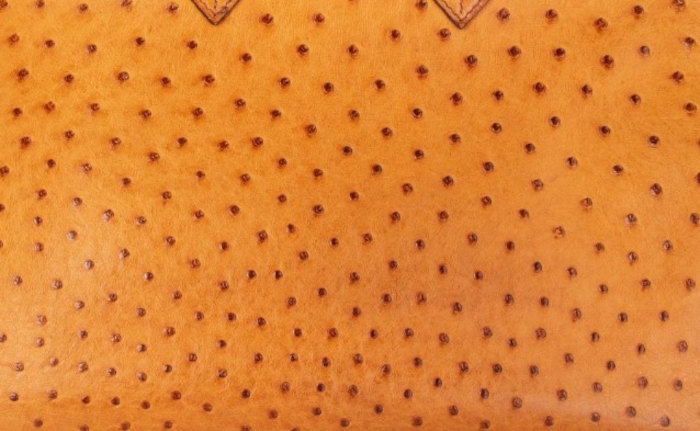
Hermès Ostrich skin is a luxury material used in the production of handbags, wallets, and other small leather goods. Ostrich leather has a distinctive polka dot pattern that sets it apart from other materials. It is incredibly soft, yet durable and resistant to wear and tear.
Ostrich leather is sourced from South Africa and is characterized by its natural pores that show the location from where the feathers were plucked, this characteristic creates a unique texture. The leather is also known for its ability to take on vibrant and rich colors that can darken with time, or lighten with sun exposure.
When identifying Ostrich skin, look for the pore quill pattern and the bumps and ridges that make up its distinctive texture.
Fabrics
Hermès fabric, commonly known as Toile, is used to create a variety of products, including handbags, wallets, clothing, and other accessories. Toile is a durable and lightweight material, often made from cotton, linen, or a blend of both. It is known for its distinctive texture and vibrant colors and patterns that can be printed onto the fabric.
Hermès offers a range of fabrics that are used in their products, next we will show you the most popular Hermès fabrics and their characteristics.
Toile H Canvas
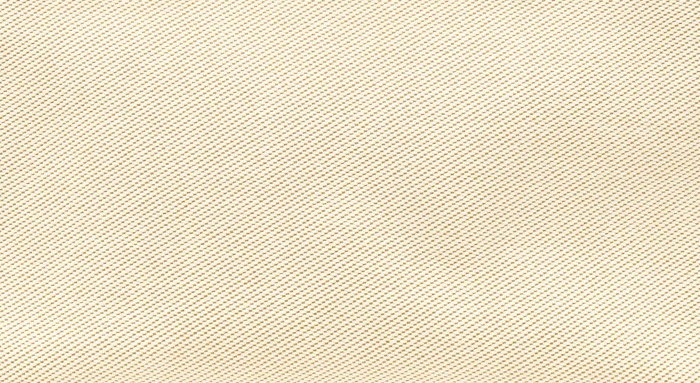
Toile H canvas, also known as the Herringbone canvas, is a signature fabric of Hermès. It is a thick, durable material made from 100% cotton and woven in a distinctive herringbone pattern. This particular pattern is recognizable for its zigzagging design, which forms a series of V-shaped lines. The H in Toile H stands for "Hermès," as the pattern resembles the letter H.
Hermès often combines Toile H canvas with leather to create luxurious handbags and accessories that are both sturdy and stylish. The canvas serves as a durable base while the leather adds a touch of elegance and sophistication.
Toile GM Canvas
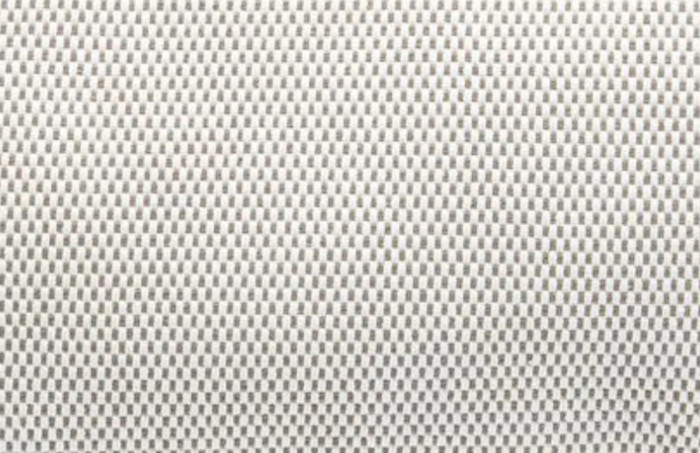
Hermès Toile GM canvas is a variant of the brand's regular Toile canvas, featuring a larger weave pattern, which is what the "GM" in its name stands for (Grand Modèle in French). Like the regular Toile canvas, the GM version is also made by combining two different color threads to form an "H" pattern. However, due to its larger weave, this material tends to be more breathable and lightweight.
The Toile GM canvas is often used by Hermès in the making of larger bags, such as travel bags or totes, as it can withstand the weight and bulkiness of the items inside without losing their shape or structure. Additionally, the larger weave pattern gives the fabric a unique texture, adding a touch of casual elegance to any Hermès bag.
Toile Officier Canvas
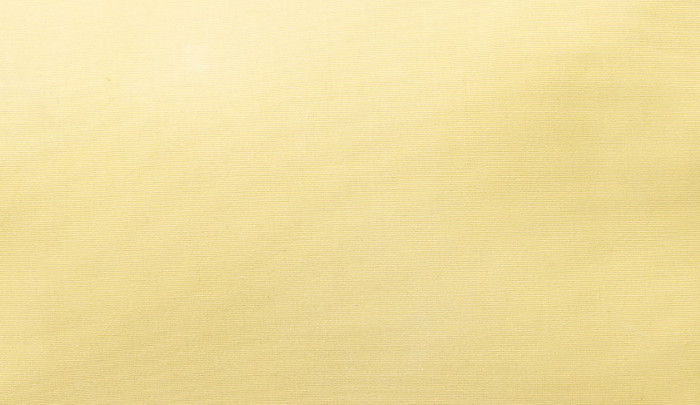
Hermès Toile Officier is a unique cotton canvas that stands out due to its thin thread, which is dyed in a single color. It is commonly used in some of the most iconic Hermès lines, including the Garden Party and Herbag. Its durability and strength make it a popular choice among Hermès lovers.
Toile Officier is both water and scratch-resistant, which makes it ideal for daily use. It is also very lightweight and easy to clean, which is why it is often used for bags and accessories that need to be practical as well as stylish.
Toile So H Canvas
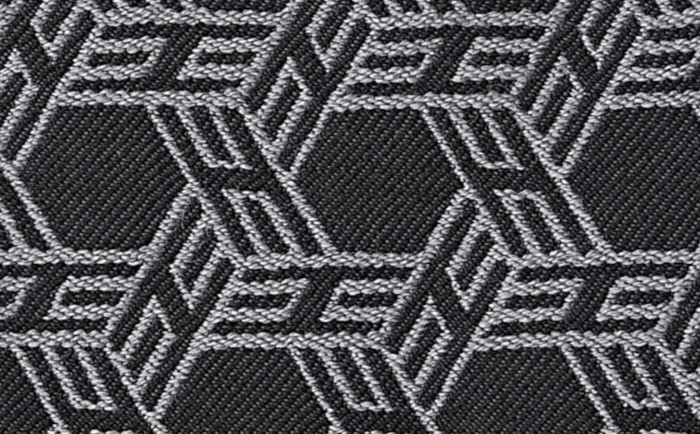
Toile So H is a unique material used exclusively in the Garden Party line of Hermès handbags. This canvas and wool blend is carefully woven together to create the iconic "H" design that Hermès is known for.
This material is not only visually stunning but also practical, as it is lightweight and incredibly durable. Its lightness makes it easy to carry around on a daily basis without weighing you down. Despite being a bit rare, Toile So H has become a popular choice for those who love the Garden Party line, due to its unique and eye-catching design.
Toile Jean Canvas
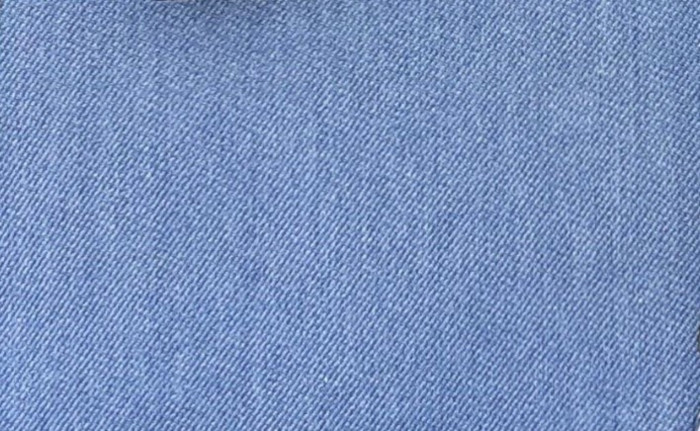
Hermès Toile Jean is a unique and durable material that is made from denim canvas. This material is both sturdy and casual, with a unique texture that adds character to any Hermès accessory it is used in. It is a popular choice for Hermès Garden Party bags due to its durability and resistance to wear and tear.
The canvas is made of high-quality cotton, which makes it easy to clean and maintain, ensuring it retains its appearance for years to come. Toile Jean is perfect for those looking for a casual yet elegant accessory.
Toile Chevrons Canvas
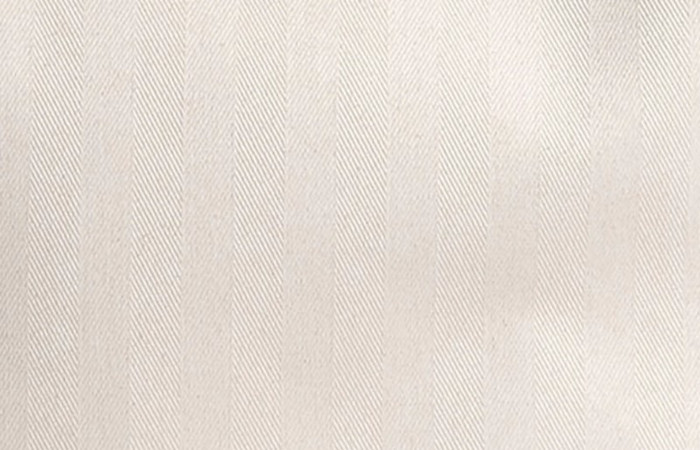
Hermès Toile Chevron canvas is a woven cotton material that features a chevron pattern. It's made by combining two different threads, one dyed and one left natural, which gives the fabric its distinct look. It is important to note that this material should not be mistaken for Herringbone Linen.
Toile Chevron canvas is a flexible and durable material that is often paired with various Hermès leather types. It is commonly used in accessories and bags, including the Garden Party and Evelyne bags. The unique texture and pattern of Toile Chevron canvas make it a standout material for any Hermès product. It is also fairly easy to clean, making it a practical choice for everyday use.
Feutre Canvas
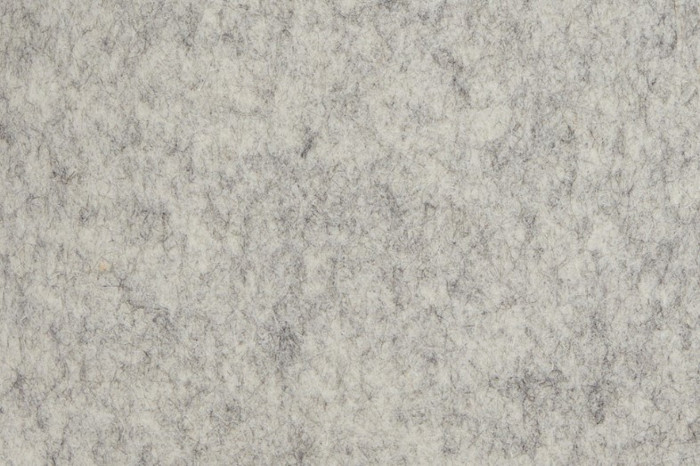
Hermès Feutre is a luxurious material that is perfect for winter months, as it is both soft and warm to the touch. It is made from wool fibers that are tightly woven together, making it a durable material that can withstand daily use.
Feutre is used mostly in smaller accessories, such as pouches and wallets, but it has also been used for larger bags in the past. The material is available in a variety of colors, allowing you to find the perfect match for your wardrobe.
One thing to note is that Feutre is not as water-resistant as other Hermès materials, so it's important to be cautious when using it in rainy or snowy weather.
Lainage Canvas
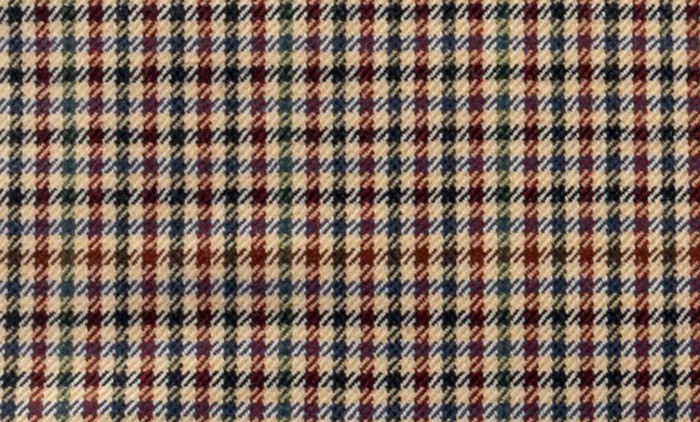
Lainage is a unique material that was introduced by Hermès in 2006 for their Fall Paris collection. This wool material features a beautiful plaid print and was exclusively used for that season. However, since its discontinuation, it has become a sought-after material by Hermès enthusiasts and collectors.
While it is no longer being used in new designs, it is still possible to find Hermès accessories made from Lainage canvas in the second-hand market. The wool material offers a warm and cozy feel, making it ideal for fall and winter accessories.
Crinoline Canvas
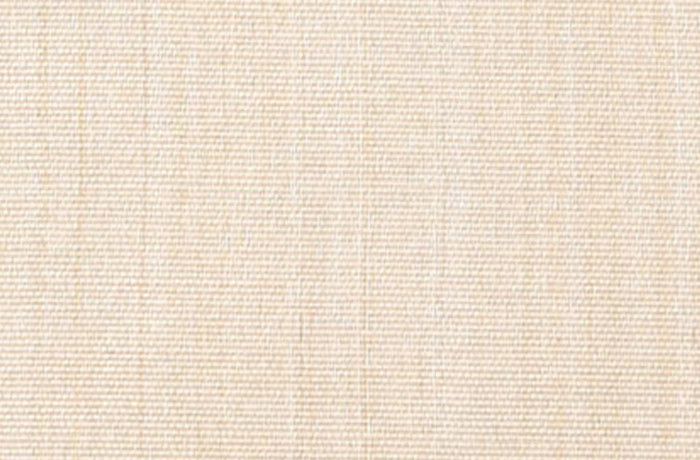
Crafted from a blend of horsehair and hemp, Hermès Crinoline canvas is a sturdy and durable material that is commonly combined with leather for added strength. This material is particularly useful in bags that require added structure.
Although no longer in production, Crinoline bags can still be found in the secondary market. The unique texture and the ability to hold its shape well make it a great option for anyone who wants a durable yet stylish Hermès bag.
As we can see, Hermès uses a wide range of high-quality skins and materials in its products, each with its own unique characteristics and benefits. From the popular and durable calfskin and goatskin to the exotic skins and sturdy fabrics. Hermès materials are prized for their beauty, durability, and versatility.
As a professional luxury reseller, it's important to understand the different types of Hermès materials and their characteristics in order to provide the best possible service to your clients who are looking to invest in luxury handbags.
If you want to get more information about Hermès to improve your knowledge as a luxury reseller, browse our blog for professionals.
Discover which are the most sought-after skins of Hermès handbags in the resale market.
Whether you’re looking for faster ways to get more luxury products to sell, or you want to connect with potential buyers and resellers, we offer you a secure channel to do it.
Become a member today and stay tuned with the latest luxury items available in the resale market!





